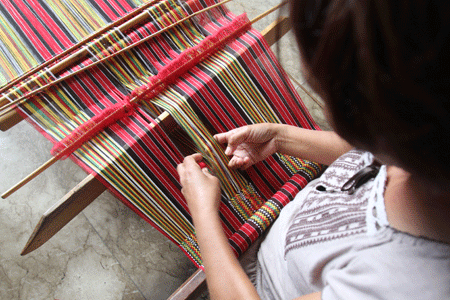The Philippines has a rich history of weaving that dates back thousands of years. Weaving was a crucial part of the country’s pre-colonial culture and was used to create everything from clothing and textiles to baskets and other household items.
The earliest known evidence of weaving in the Philippines comes from the archaeological site of Nagsabaran in Northern Luzon. Here, fragments of woven fabrics have been discovered dating back to the first millennium BC.
These fabrics were made using various techniques, including warp ikat, where the threads are dyed before weaving, and plain weave, where the threads are interlaced over and under each other.
Weaving continued to flourish throughout the pre-colonial period, with various weaving traditions developing in different regions of the country. For example, the Yakan people of Basilan Island in the southern Philippines are known for their intricate and colorful textiles, which are often used in their traditional clothing.
The B’laan people of Mindanao are known for their abaca fiber textiles, which are used for both clothing and household items.
During the Spanish colonial period, weaving traditions continued to evolve and adapt. The introduction of new materials and techniques, such as the use of silk and the use of the pedal loom, influenced the development of new weaving styles.
Spanish colonizers also encouraged the production of textiles for export, leading to the development of weaving centers in Manila and other parts of the country.
In the 20th century, weaving continued to be an important part of Philippine culture, with various initiatives aimed at preserving and promoting traditional weaving techniques. One such initiative was the creation of the Philippine Textile Research Institute in 1979, which conducts research and development projects related to the country’s weaving industry.
Today, Philippine weaving continues to thrive, with various weaving communities producing textiles using traditional techniques as well as modern designs. The country’s weaving traditions are also being celebrated on the international stage, with Philippine weaves being showcased in fashion shows and exhibitions around the world.
Overall, the history of weaving in the Philippines is a testament to the country’s rich cultural heritage and the enduring legacy of its pre-colonial traditions. From the earliest days of warp ikat to the modern designs of today, weaving has played a vital role in shaping Philippine culture and identity.
